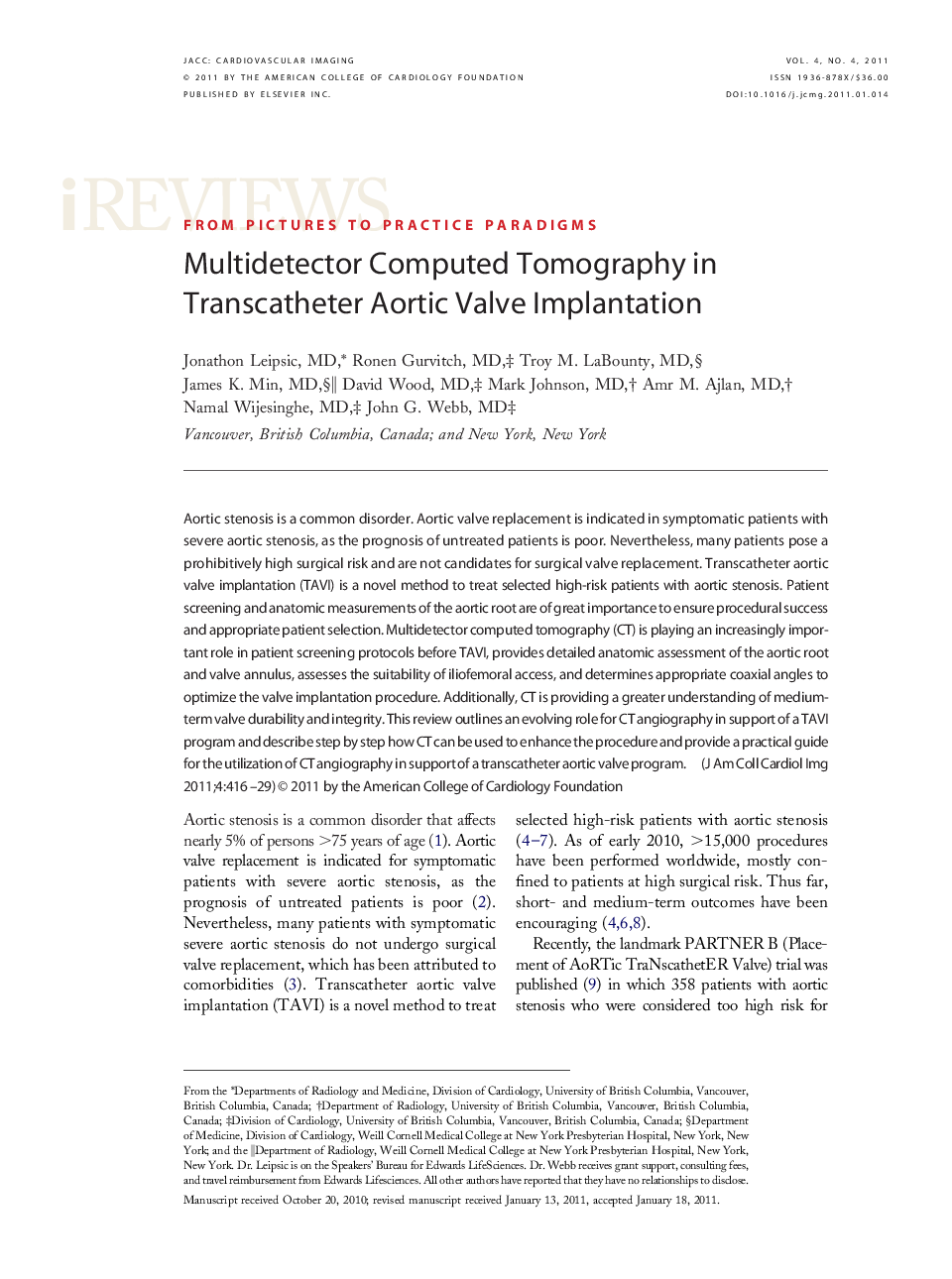| Article ID | Journal | Published Year | Pages | File Type |
|---|---|---|---|---|
| 2938745 | JACC: Cardiovascular Imaging | 2011 | 14 Pages |
Aortic stenosis is a common disorder. Aortic valve replacement is indicated in symptomatic patients with severe aortic stenosis, as the prognosis of untreated patients is poor. Nevertheless, many patients pose a prohibitively high surgical risk and are not candidates for surgical valve replacement. Transcatheter aortic valve implantation (TAVI) is a novel method to treat selected high-risk patients with aortic stenosis. Patient screening and anatomic measurements of the aortic root are of great importance to ensure procedural success and appropriate patient selection. Multidetector computed tomography (CT) is playing an increasingly important role in patient screening protocols before TAVI, provides detailed anatomic assessment of the aortic root and valve annulus, assesses the suitability of iliofemoral access, and determines appropriate coaxial angles to optimize the valve implantation procedure. Additionally, CT is providing a greater understanding of medium-term valve durability and integrity. This review outlines an evolving role for CT angiography in support of a TAVI program and describe step by step how CT can be used to enhance the procedure and provide a practical guide for the utilization of CT angiography in support of a transcatheter aortic valve program.
